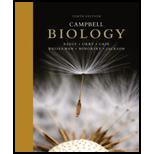
Concept explainers
Humans and chimpanzees are sister species. Explain what this Statement means.
To explain: How humans and chimpanzees are sister species.
Introduction: The genome of an organism contains stored information about genetic changes that have occurred over time. A phylogenetic tree can be constructed from the sequence of genes of different organisms. Evolutionary history can be deduced from the branching pattern of a phylogenetic tree. The branching pattern indicates the relatedness among the organisms. The group that shares the immediate common ancestors are called sister species.
Explanation of Solution
Chimpanzees and humans are hominoids. They are together classified under the suborder: Anthropoidea. They branched off from a common ancestor. Chimpanzees and humans are the modern-day descendants of their lineage. Their lineage shows that they diverged 4 million years ago, but chimpanzees and humans did not exist at that time. Some undiscovered ancestors existed around 4 million years ago and it was a hominoid. It was neither a chimpanzee nor a human. It would have had a human-like and chimpanzee-like ancestor. Closely-related organisms resemble one another due to their common ancestry. However, it is not always possible if their lineage has evolved at different rates or has faced different circumstances. Phylogenetic analysis is helpful to infer the identity of species by analyzing the relatedness of DNA sequences. Humans and chimpanzees being sister species indicate that they both share an immediate common ancestor or that they have descendants from a common ancestor. Both the organisms are closely related to each other more than any other organisms.
Want to see more full solutions like this?
Chapter 26 Solutions
Campbell Biology (10th Edition)
 Human Anatomy & Physiology (11th Edition)BiologyISBN:9780134580999Author:Elaine N. Marieb, Katja N. HoehnPublisher:PEARSON
Human Anatomy & Physiology (11th Edition)BiologyISBN:9780134580999Author:Elaine N. Marieb, Katja N. HoehnPublisher:PEARSON Biology 2eBiologyISBN:9781947172517Author:Matthew Douglas, Jung Choi, Mary Ann ClarkPublisher:OpenStax
Biology 2eBiologyISBN:9781947172517Author:Matthew Douglas, Jung Choi, Mary Ann ClarkPublisher:OpenStax Anatomy & PhysiologyBiologyISBN:9781259398629Author:McKinley, Michael P., O'loughlin, Valerie Dean, Bidle, Theresa StouterPublisher:Mcgraw Hill Education,
Anatomy & PhysiologyBiologyISBN:9781259398629Author:McKinley, Michael P., O'loughlin, Valerie Dean, Bidle, Theresa StouterPublisher:Mcgraw Hill Education, Molecular Biology of the Cell (Sixth Edition)BiologyISBN:9780815344322Author:Bruce Alberts, Alexander D. Johnson, Julian Lewis, David Morgan, Martin Raff, Keith Roberts, Peter WalterPublisher:W. W. Norton & Company
Molecular Biology of the Cell (Sixth Edition)BiologyISBN:9780815344322Author:Bruce Alberts, Alexander D. Johnson, Julian Lewis, David Morgan, Martin Raff, Keith Roberts, Peter WalterPublisher:W. W. Norton & Company Laboratory Manual For Human Anatomy & PhysiologyBiologyISBN:9781260159363Author:Martin, Terry R., Prentice-craver, CynthiaPublisher:McGraw-Hill Publishing Co.
Laboratory Manual For Human Anatomy & PhysiologyBiologyISBN:9781260159363Author:Martin, Terry R., Prentice-craver, CynthiaPublisher:McGraw-Hill Publishing Co. Inquiry Into Life (16th Edition)BiologyISBN:9781260231700Author:Sylvia S. Mader, Michael WindelspechtPublisher:McGraw Hill Education
Inquiry Into Life (16th Edition)BiologyISBN:9781260231700Author:Sylvia S. Mader, Michael WindelspechtPublisher:McGraw Hill Education





